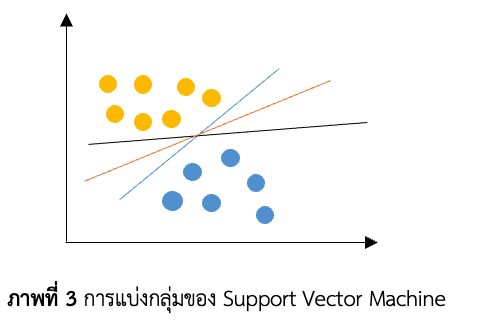Enrollment confirmation prediction for prospective university students by applying deep learning techniques
Main Article Content
Abstract
The objectives of this research are 1) to study the models of enrollment confirmation prediction for prospective university students, 2) to study and find the appropriate parameter values to enhance the efficiency of the models, 3) to compare the model performance of deep learning techniques and traditional machine learning techniques for predicting the university students' admission confirmation. The applied models include Convolutional Neural Network (CNN), Long Short-Term Memory (LSTM), Random Forest, Naive Bayes, and Support Vector Machine (SVM). The samples are 4,479 records of students who applied for admission to universities during the academic year 2018-2021. The modeling of traditional machine learning and deep learning uses 11 features consisting of prefixes, schools, applicant types, and 8-subjects grades. The performance comparison between the two models revealed that the deep learning model outperformed the traditional machine learning model. Therefore, a study was conducted to find suitable parameters to enhance the efficiency of the deep learning model. The results of the study found that the CNN model had the highest accuracy at 64.68 percent, and the LSTM needed to be more suitable due to overfitting. In conclusion, the CNN was suitable for applying to the system of enrollment confirmation prediction for prospective university students.
Article Details

This work is licensed under a Creative Commons Attribution-NonCommercial-NoDerivatives 4.0 International License.
The Journal of Science and Science Education (JSSE) retain the right of all articles published in JSSE. The coresponding author or the authorized person on behalf of the authors must send the complete Copyright Transfer Form to JSSE before any article get published in JSSE.
Copyright Transfer Form
The JSSE request the coresponding author or the authorized person on behalf of the authors upload the manuscript under the together with the Copyright Transfer Form under the supplementary data. The guidline for uploading both manuscript and Copyright Transfer Form is shown below:
1. Upload the manuscript in the sub-menu, Article Component > Article Text.
2. Upload the the Copyright Transfer Form in the sub-menu, Article Component > Other.
Download Copyright Transfer Form
References
Cheewaprakobkit, P. (2019). Improving the Performance of an Image Classification with Convolutional Neural Network Model by Using Image Augmentations Technique (in Thai). TNI Journal of Engineering and Technology, 7(1), 59-64.
Jitboonyapinit, C., Maneerat, P. and Chirawichitchai, N. (2022). Development of Sentiment Analysis Model Based on Thai Social Media Using Deep Learning Technique (in Thai). Huachiew Chalermprakiet Science and Technology Journal, 8(2), 8-18.
Kawaguchi, K., Kaelbling, L., and Bengio, Y. (2022). Mathematical Aspects of Deep Learning. United Kingdom: Cambridge University Press.
Nandal, P. (2020). Deep Learning in diverse Computing and Network Applications Student Admission Predictor using Deep Learning. Proceedings of the International Conference on Innovative Computing & Communications (ICICC) 2020 (pp. 1-5). India: University of Delhi.
Palwisut, P. (2016). Improving Decision Tree Technique in Imbalanced Data Sets Using SMOTE for Internet Addiction Disorder Data (in Thai). Information Technology Journal, 12(1), 54-63.
Paphat, A., Sriurai, W. and Ditcharoen, N. (2022). University student dropout prediction improved by feature selection with Multilayer Perceptron Neural Network (in Thai). Journal of Science and Science Education, 5(1), 39-48.
Suepitak, S., Nissaidee, B. and Buathong, W. (2021). Classification Techniques Comparison for Predicting Graduate Trend (in Thai). PKRU SciTech Journal, 5(2), 42-50.
Tongpuang, P. and Sanrach, C. (2021). The Comparison of Data Classification Efficiency to Predict Scholarship Awarded for Undergraduate Students by Data Mining Techniques (in Thai). Journal of Professional Routine to Research, 8(2), 44-52.
Tosasukul, J. and Kuttipon, S. (2022). An Efficiency Comparison of Forecasting Models for the Amount of Water in Dam by Data Mining Techniques (in Thai). Journal of Accountancy and Management, 14(4), 1-17.


